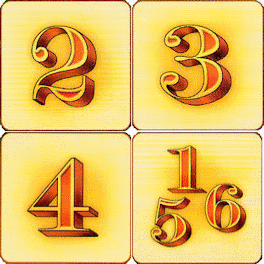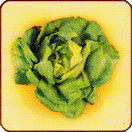The following rules apply to all versions of the game, though different editions may be differently worded. There are four main groups of editions: (1) Intellect 1974 and Waddingtons 1980, (2) Ravensburger 1978 and its sub-licensees, also Alga (Swedish) 1986, (3) Gibsons 1987 and Abacus/Rio Grande 2000, and (4) Ravensburger 2008 and Gibsons 2010. The main differences are:
Getting home.
Originally, no one was allowed to get home with more than 20 carrots left over. For the 1978 Ravensburger edition I changed this so that the first home may have no more than 10 carrots left, the second 20, and so on.Rearrangement of squares.
Originally, the first lettuce square lay seventh from Start, enabling the first player to reach it immediately. For Gibsons 1986 I reduced the profitability by shifting it to the 10th square, where it has remained ever since (with consequent minor rearrangements of preceding squares). At the same time, I changed the last four squares immediately preceding Home from 2-hare-lettuce-hare to 1-carrot-hare-carrot.Jugging the hare.
This has always been the most variable feature (not inappropriately!). In particular, tournament players tend to dislike the unpredictability of landing on hare squares, and this was remedied in 2019. For details see separate page.Carrot supply runs out.
Tournament play threw up a request for a rule to cover what happens when the carrot patch doesn't contain enough carrot cards to draw from. See Getting baulked.Lettuce beds.
For the Chinese and Japanese editions produced by Broadway Games in 2018 the publishers rejigged the lettuce squares by replacing them with bed squares, the idea being that anyone landing on one takes a nap while everyone else has an opportunity to pass them. A nice touch!Illustrations.
The illustrations below are from the English-language version of the classic Ravensburger first edition (1979). In German speaking and other Grimm-influenced countries the tortoise is replaced by a hedgehog.The basic game
- Players
- 3 to 6 (best for 4 or 5), older children and adults.
- Playing time
- In minutes: from 10 to 15 times the number of players.
- Equipment
- 1 gameboard, 6 counters ("runners"), 18 lettuce cards, 15 hare cards (in some editions), and carrot cards in denominations of (typically) 1-5-10-15-30-60.
- The general idea
- The aim is to be the first to get your runner from Start to Home. Start is the space before the first square, Home the space following the 64th square. Runners-up can play on for position till only one is left. At each turn you can move as far forwards as you like provided you can pay for it. Payment is made in units of energy called carrots, of which you start with 65. The further you move in one turn, the faster the cost of moving accelerates, so the longer you leap the sooner you run out of carrots. You can earn more carrots by landing on certain pay-out squares. How many you get depends on your position in the race, a feature designed to favour slow players (tortoises) more than fast ones (hares). You can affect how many carrots your opponents get back by overtaking them so as to change their position. This makes Hare & Tortoise a game of strategic skill rather than a dice-rolling game of chance.
- Setting up
- Decide the order of seating and play by any agreed means (for example, the first move is made by the youngest player, or the player with the
most hair, or the loser of the previous game).
- Each player chooses a runner of their preferred colour and places it in the space marked START.
- Each player receives carrot cards totalling 65 made up as follows: one 30, one 15, one 10, two 5's. (Some editions have five or six players receiving an additional 30, making 95 in all, but this is no longer recommended.) Carrots are what you have to pay in order to advance. Hold them like a hand of playing-cards during the game so that no one knows exactly how many you have left.
- Each player also receives three lettuce cards. Each lettuce can be exchanged for carrots when you land on a lettuce square. You must convert all your lettuces to carrots before you are allowed to reach home.
- Each player also receives one race card, which shows many carrots it costs to move any given distance.
- Separate the undealt carrot cards into their various denominations and place them on the board in the numbered spaces constituting the "carrot patch". Throughout play, all carrot payments are made into or out of this area.
- Put any undealt lettuce cards back in the box. They're not needed.
- Shuffle the Hare cards and place them face down in a convenient spot. Note: Some early editions do not have hare cards. The alternative is explained when you reach Hare squares (below).
- Requirements
- Before you can get home you must fulfil two conditions:
- You must cash all your lettuce cards on the way round. You can only do this by landing on lettuce squares, which are few and far between.
- You mustn't have too many carrots left over when you reach home. First home not have more than 10 left unused after paying for their last move, the second may have up to 20, the third up to 30, and so on. (Note: In early editions nobody may get home with more than 20.)
- How to move
- You can move your runner forwards to any unoccupied square except a tortoise square (to which you can only move backwards.) You can travel any
distance you like so long as you have enough carrots to pay for the move. The cost depends on the number of squares you move, as follows:
To move 1 square costs you 1 carrot
To move 2 squares costs 1+2 = 3 carrots
To move 3 squares costs 1+2+3 = 6 carrots
To move 4 squares costs 1+2+3+4 = 10 carrots
To move 5 squares costs 1+2+3+4+5 = 15 carrots,
and so on. You can find the cost of moving further by consulting the scale of carrot charges printed on your Race Card. Later in the game you may move backwards instead of forwards, but only to a tortoise square. Moving backwards costs nothing - in fact, it is a way of earning more carrots, as explained below.
Where to move
There are five different types of square you can land on: Numbers, Carrots, Lettuces, Hares, and Tortoises. Each of these offers a special way of earning more carrots. But note that:- You must always pay your carrots before you make your move.
- You may never land on an occupied square.
- You may not land on a lettuce square if you have no lettuces left .
- You may not move forwards to a tortoise square, only backwards.
- Number squares
- When you land on a number square you do nothing immediately. When your turn comes round again, check whether the number you're on corresponds to your position in the race. If it does, you must draw extra carrots from the patch before moving away. The number you draw is 10 times your position - that is, 10 if you are in 1st position an a "1" square, 20 if in 2nd position on a "2" square, and so on. The squares marked with a flag numbered 1-5-6 always stand for 1st position, but they also represent 5th or 6th position if that many play. Carrots are only earned if the number corresponds to your position when you move away from the square, not when you land on it. If someone else goes past you while you're waiting, they automatically change your position and may prevent you from getting any carrots.

- Carrot squares
- When you land on a carrot square you do nothing immediately. When your turn comes round again you may, if you wish, stay where you are instead of moving off. This entitles you to draw 10 carrots from the patch - or, if you are nearly home and have too many in hand, to pay 10 carrots into the patch. This is called "chewing a carrot". You can stay on the same carrot square for as long as you like, so long as you pay or draw 10 carrots at each turn. If fewer than 10 carrots are available, and you desperately need to draw 10, you may invoke the Baulk rule.

- Lettuce squares
- This where you can exchange a lettuce for a number of carrots, so you may only land on one if you have at least one lettuce remaining. Lettuce squares are very valuable, as there are not many of them, and you don't want lettuces but you do want carrots.

When you land on a lettuce square you do nothing immediately, except to turn your runner upside down to show you have just got there. On your next turn, you turn it right way up and "chew a lettuce". This is done by discarding one lettuce card to the "compost heap" (back in the box) and drawing a number of carrots from the carrot patch. The number you draw is equal to 10 times your current position in the race. For example, if you are lying in 1st position when you chew the lettuce, you win 10 carrots; if 2nd, 20; and so on. You may not move away on the same turn as chewing a lettuce (give it time to digest!), but you must move away on your next turn. You can't just stay there and chew another one. - Hare squares
- Hare squares are for players who like taking chances. Having landed on a hare and paid for your move you then 'jug the hare'. In most editions you do this by drawing the top card from the pile of hare cards following the instruction printed on it, and returning it to the bottom of the pile. These instructions tend to favour tortoises rather than hares, so it is generally safer to land on a hare square when you are further behind in the race and least safe when you are up front. The latest editions have cards reading as follows:

InstructionClarificationGive 10 carrots to each player lying behind you in the race (if any)If you can't, give them five each; if you still can't, one each. A player who doesn't want extra carrots may discard them.If there are more players behind than in front of you, miss a turn, otherwise play againIf equal, of course, do nothing.Restore your carrot holding to exactly 65.With more than 65, lose the excess; otherwise, draw the deficitDraw 10 carrots for each lettuce you holdHolding none, miss a turnFree ride!Take back the carrots you just paid.Lose half your carrotsIf an odd number, keep one backShow us your carrots!Count your carrot cards face up to the table one by oneShuffle the hare cards and receive from each player 1 carrot for doing soInclude this card in the shuffleThere are two of each card except the last; 15 in all. Note: In older editions without hare cards there is a different way of jugging the hare: see Jugging the Hare page for details.
In tournament play, or whenever players prefer to avoid random eventualities, the following alternative hare square rule may be applied: When you land on a hare square do nothing immediately. If nobody goes past you, draw 10 carrots when you next move. If they do, pay 10 carrots into the carrot patch for each player who goes past you, in either direction. - Tortoise (or hedgehog) squares
- You can only move backwards to a tortoise square, never forwards. Doing so costs you nothing. Instead, you immediately draw 10 carrots for each step it took to reach the tortoise square - for example, 10 if it was immediately behind you, 20 if two squares back, and so on.

You may only move back to the nearest tortoise square behind you, and only if it is unoccupied Subject to this rule, however, you may move back from a tortoise square to the previous one on as many consecutive turns as you like, possibly earning 100 or more carrots in the process. - Getting Home
- You get home by moving your runner forwards to the HOME flag immediately beyond the last square and making the required
payment. You may only do this if -
1. You have cashed all your lettuces and have none left, and
2. The number of carrots you have after paying for your last move is not more than 10 times your position in the race - that is, not more than 10 if you get home first, not more than 20 if you come in second, and so on.
You may wish to go on playing for position. In this case the player who got home first remains in the first position as far as the other are concerned. For example, in a four-player game the player in the rear is always 4th, no matter how many others have reached home. It is important to remember this when using lettuce and number squares. - Getting stuck
- If you run out of carrots - or for any other reason cannot make a legal move on your turn to play - you must start the race again. Replace your runner in the Start position, restore your carrot holding to 65, and move off immediately. You needn't take any more lettuces, however - those you have already chewed remain out of play.
- Getting baulked (new rule 2018)
- You are 'baulked' if there aren't enough carrots left in the patch to pay your entitlement for landing on a lettuce square, reversing to a tortoise, or following a hare card instruction. In this case everyone except the baulked player must immediately pay back into the carrot patch half the number of carrots they hold (or one fewer than half if it's an odd number). You then draw your entitlement and normal play resumes. (If you're baulked on a carrot square because fewer than 10 carrots remain in the patch you can only pay in 10 carrots, not draw 10 out.)
For two players
You each start with 95 carrots and 5 lettuces, and move two runners round the board. The winner is the first to get both their runners home.At each turn are free to move either one of your runners, but not both. When one of your runners lands on a lettuce square, however, you must use your next turn for chewing a lettuce and the turn after that for moving away.
When bringing your first runner home you may have any number of carrots and lettuces left over, but the usual rules apply to bringing your second runner home. That is, all five lettuces must have been chewed, and the number of carrots left over must not exceed 20 if it comes home second or 30 if third.
One correspondent on Boardgame Geek likes what he calls the "two-bunny" version so much that he recommends the same procedure for three players. Sounds like a good idea! - except that hares are not "bunnies". (Bunnies are cute. Hares are mad.)
Partnership play (4 or 6 players)
Four can play as two teams of two, six as three teams of two players or two teams of three. Arrange your seating such that no two players of opposing teams play consecutively. The winning team is the first to get all its runners home.Copyright

